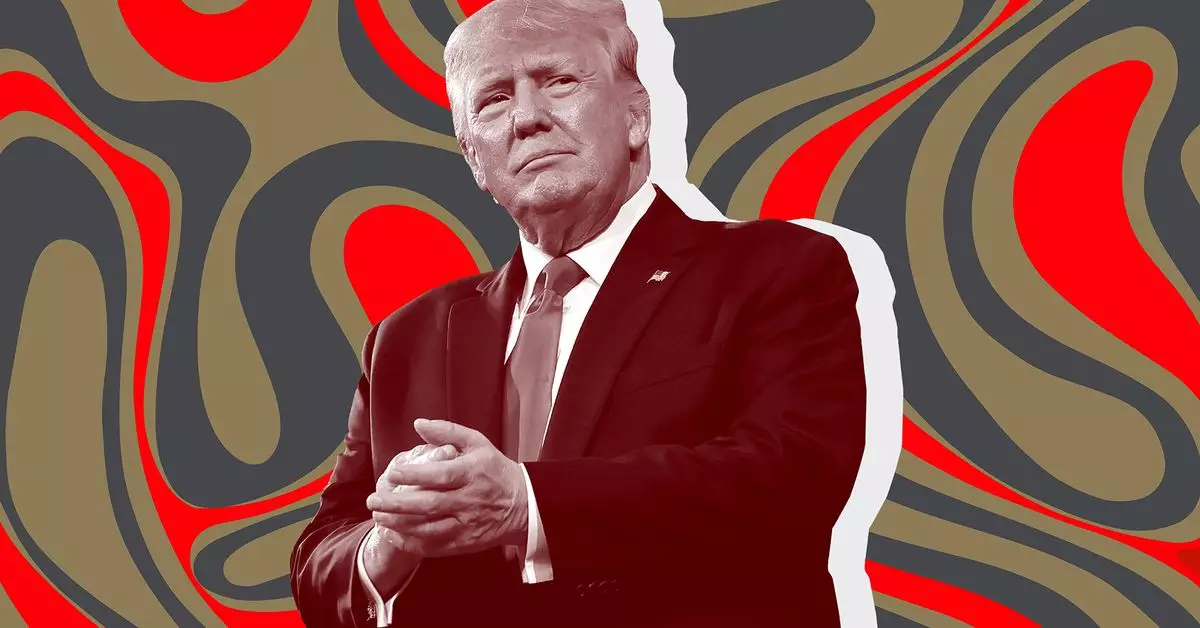On a notably tumultuous Tuesday, former President Donald Trump’s cryptocurrency venture, World Liberty Financial, initiated its token sale to great fanfare, only to encounter significant technical problems. Moments after launching, the platform’s website was inundated with traffic, leading to its temporary crash. Despite the apparent interest, the dynamics surrounding this decentralized finance (DeFi) project reveal complexities that merit further examination, particularly regarding its implications and target audience.
Zach Folkman, a co-founder of World Liberty Financial, reported an astonishing figure of “well over 100,000 sign-ups” from eager investors. However, despite this overwhelming show of interest, actual transactions tell a different story. According to blockchain analytics service Etherscan, as of the afternoon on launch day, only 5,317 unique wallet addresses had successfully acquired WLFI tokens. This discrepancy prompts questions about the motivations behind the initial sign-ups and whether they were based on genuine interest or simply speculative excitement surrounding Trump’s involvement.
Sandy Peng, a WLFI advisor, stated that the unexpected traffic surge—reaching 72 million unique visits within an hour—led to the outages experienced by the website. While such high numbers may typically be viewed as a sign of success, they also lay bare a significant operational oversight. Was the World Liberty Financial team equipped to handle such immense interest, or does this reflect a broader issue in the cryptocurrency space where launch strategy often outpaces technical preparedness?
Despite its promotional campaign hinting at its potential for democratizing finance, WLFI operates under a strict regulatory framework. The token is designed for governance within the World Liberty Financial platform, allowing holders to influence protocol upgrades and security measures. However, only accredited investors—typically individuals with substantial wealth—are permitted to participate in the WLFI market. This raises significant concerns about accessibility and the project’s underlying mission to aid those labeled as “unbanked” or “de-banked.”
The Securities and Exchange Commission’s (SEC) regulations create a significant barrier for potential participants. To qualify as an accredited investor, individuals must meet specific financial thresholds: an income of at least $200,000 or a net worth exceeding $1 million, excluding their primary residence. This framework effectively excludes a vast segment of the population that may have been drawn to the project, contradicting the very mission of providing access to financial tools for the underserved.
Interestingly, the release of what has been termed a “gold paper” on the same day of the token launch publicly aligned Trump and his family with the initiative. Trump’s designation as the “chief crypto associate” and the listing of his sons as “Web3 Ambassadors” adds a layer of political branding to the project. However, one must question whether such affiliations serve to lend credibility or contribute to the over-commercialization of the cryptocurrency space.
While the initial buzz surrounding World Liberty Financial’s launch presents a narrative of excitement and innovation, a deeper analysis reveals critical challenges that may hinder the project’s long-term viability. Technical difficulties, regulatory constraints, and barriers to entry threaten to alienate the very demographic it purports to serve.
If World Liberty Financial is to establish itself as a credible and impactful player in the evolving world of decentralized finance, it must navigate these hurdles carefully. Building genuine engagement with a broader audience while maintaining compliance with regulatory standards may prove to be the ultimate test of its ambitions. Ultimately, the true measure of success for WLFI will be whether it can translate initial enthusiasm into meaningful, accessible financial solutions for all.

